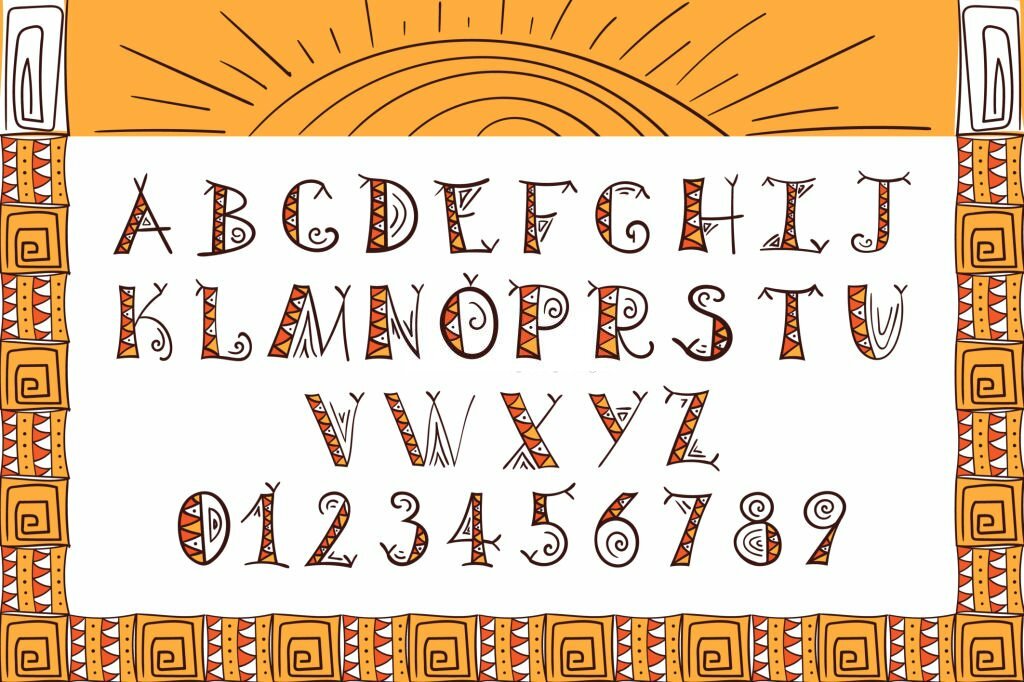The Inca civilization, renowned for its advanced engineering, monumental architecture, and intricate societal organization, possessed a distinctive writing system that differed markedly from the alphabets we are familiar with today. Unlike the written scripts of other ancient cultures, the Inca did not rely on inscriptions carved into stone or inked onto papyrus. Instead, they utilized a remarkable system known as the quipu, a complex arrangement of knotted strings that served as a means of communication, record-keeping, and cultural expression.
1. The Absence of a Formal Alphabet:
Unlike many ancient civilizations that developed written scripts using symbols or characters to represent sounds, the Inca lacked a formal alphabet. Instead, they ingeniously employed the quipu, a system of knotted strings, to encode information. The quipu became a sophisticated form of record-keeping and communication that reflected the Inca’s ingenuity and adaptability.
2. The Quipu: A Knotty Communication System:
At the core of the Inca writing system was the quipu, a series of strings made from various materials, such as cotton or animal fibers, with knots strategically placed along their length. The knots held numerical and, possibly, symbolic significance, enabling the Inca to convey a wide range of information. The quipu served as a versatile tool, allowing them to record numerical data, keep accounts, and convey narratives.
3. Numerical Information:
One primary function of the quipu was the representation of numerical data. The placement, type, and sequence of knots conveyed specific numeric values, enabling the Inca to record census data, agricultural yields, and other quantitative information essential for administrative and economic purposes. Each knot and its position carried a precise meaning, turning the quipu into an intricate numerical language.
4. A Possible Symbolic Dimension:
While the quipu was primarily used for numerical data, scholars believe that it may have had a symbolic dimension as well. Some quipus were more elaborate, featuring different colors and arrangements of strings and knots. These variations could have represented non-numerical information, such as narrative elements, genealogy, or even aspects of Inca cosmology. Deciphering this potential symbolic language remains a subject of ongoing research and exploration.
5. Skilled Quipu Keepers:
Interpreting the information encoded in the quipu required skilled individuals known as quipu keepers or quipucamayocs. These specialists were trained to create and read quipus, possessing the ability to decipher the intricate knot patterns and translate them into meaningful information. The role of the quipu keepers was crucial in the administrative and organizational aspects of the Inca Empire.
6. Oral Tradition and Memory:
In addition to the quipu, the Inca relied heavily on oral tradition to convey narratives, history, and cultural knowledge. Oral storytellers, known as the “quipucamayoc hampiy,” played a vital role in preserving and transmitting the collective memory of the Inca people. The combination of the quipu and oral tradition formed a dynamic and comprehensive means of communication within the Inca society.
7. Challenges in Deciphering:
Despite extensive efforts by scholars, deciphering the quipu remains a challenging task. The absence of a written key or codex explaining the knots and their meanings has led to multiple hypotheses regarding the quipu’s complexity. Researchers continue to explore linguistic and mathematical patterns within the quipu to unlock its full range of communicative potential.
8. Cultural Legacy:
The quipu stands as a testament to the Inca civilization’s ability to adapt and innovate in the absence of a traditional written alphabet. While the quipu remains enigmatic, its existence challenges conventional notions of written communication and highlights the diverse ways in which cultures express and preserve knowledge.
In conclusion, the Inca alphabet, as embodied by the quipu, represents a unique and intricate system of communication that goes beyond conventional written scripts. The quipu’s role in preserving numerical data, potential symbolic information, and cultural narratives showcases the depth of Inca ingenuity and the richness of their cultural legacy.
Book here.










Comment (0)